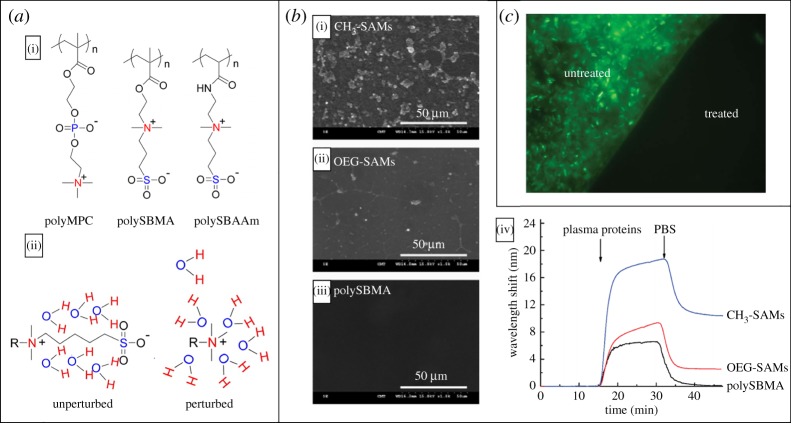Figure 7.
(a)(i) Three examples of zwitterionic polymers: poly-(methacryloyloxylethyl phosphorylcholine), polyMPC; poly-(sulfobetaine methacrylate), polySBMA; and poly-(sulfobetaineacrylamide), polySBAAm. (ii) Graphic representation of two ordering mechanisms for water by a charged group, and zwitterionic group. The zwitterionic polymer allows water's highly ordered structure to remain ‘unperturbed’, while a single charge disrupts the hydrogen bonds of water into a more disordered state. Images adapted from [229] and reprinted with permission Copyright © 2014 American Chemical Society. (b)(i–iii) Minimization of platelet adhesion by using zwitterionic polySBMA SAMs when compared with SAMs presenting terminal methyl and oligo(ethylene glycol) groups. (iv) An SPR plot comparing adsorption of blood plasma proteins at 37°C. A 1 nm wavelength shift is equivalent to a deposition of 15 ng cm−2. Images adapted from [227] with permission. Copyright © 2008 American Chemical Society. (c) Fluorescence microscopy image displaying Pseudomonas aeruginosa attached to a partially coated NH2-glass substrate after 70 h of bacterial exposure. A section of the surface was treated with a zwitterionic polymer pSBMA300-catechol (treated) while a portion of the surface remained unmodified (untreated). Adapted from [16] with permission. Copyright © 2009 John Wiley and Sons.

